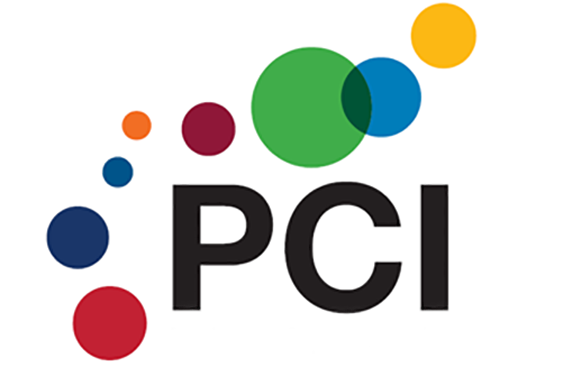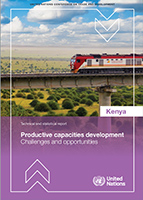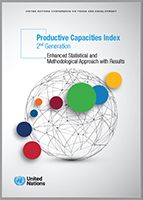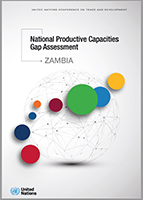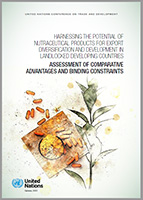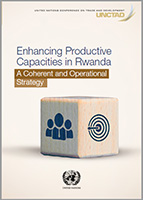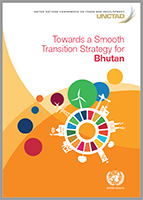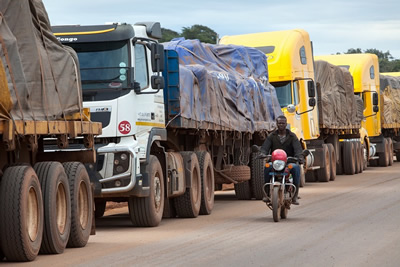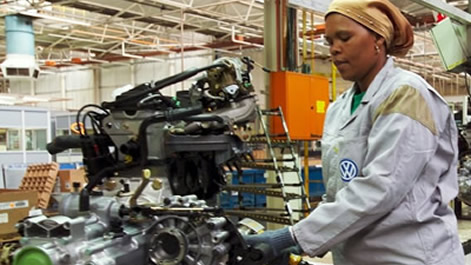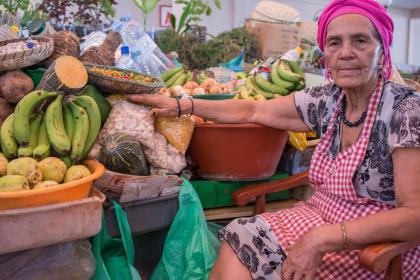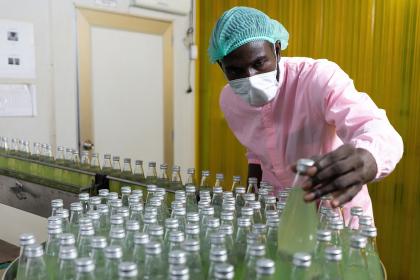-
Building productive capacity is a pathway to prosperity for all
-
The PCI is the first comprehensive attempt to measure productive capacities in all economies and construct a multidimensional index that can provide country-specific insights and diagnostics of productive capacity development.
UNCTAD's Productive Capacities Index (PCI) is a dynamic and practical tool to support developing countries in understanding the status of their productive capacity and how this can be improved.
It builds on UNCTAD's long-standing work on productive capacities, which are essential for generating inclusive and sustained economic growth and achieving sustainable development.
"Productive capacities are the productive resources, entrepreneurial capabilities and production linkages that together determine a country's ability to produce goods and services that will help it grow and develop."
The PCI covers 194 economies for the period 2000-2022. The set of productive capacities and their specific combinations are mapped across 42 indicators. This makes our PCI multidimensional in its analytical abilities.
The index can help diagnose the areas where countries may be leading or falling behind, spotlighting where policies are working and where corrective efforts are needed. It suggests a roadmap for future policy actions and interventions under each of its eight components: human capital, natural capital, ICTs, structural change, transport, institutions and the private sector.
It was developed in response to the ECOSOC resolution (E/RES/2017/29), encouraging UNCTAD "to pursue its methodological work to measure progress in and identify obstacles to the development of productive capacities in developing countries".
The PCI has been peer-reviewed and validated at national and regional levels by leading technical experts across the UN system, as well as by academics and government stakeholders. Stakeholders in select countries have been trained on how to use the index in their development policymaking processes. UNCTAD stands ready to conduct more training sessions at the request of countries.
PCI categories
Human capital
Human capital captures the education, skills and health conditions possessed by population, and the overall research and development integration in the texture of society through the number of researchers and expenditure on research activities. Gender dimension is reflected by the fertility rate which at each increase reduces human capital score.
Natural capital
Natural capital estimates the availability of extractive and agricultural resources, including rents generated from the extraction of the natural resource, less the cost of extracting the resource. To capture commodity dependence, natural capital decreases as the material intensity increases.
Energy
This category measures the availability, sustainability and efficiency of power sources. For this reason, it is composed by use and access to energy, losses in distribution and renewability of energy components and sources, and includes the GDP generated by each unit of oil to highlight further the importance of optimal energy systems.
Transport
Transport measures the capability of a system to take people or goods from one place to another. It is defined as the capillarity of roads and railways network, and air connectivity.
Information and Communication Technology (ICT)
Information and Communication Technology estimates the accessibility and integration of communication systems within the population. It includes fixed line and mobile phones users, internet accessibility and server security.
Institutions
Institutions aim at measuring political stability and efficiency through its regulatory quality, effectiveness, success in fighting criminality, corruption and terrorism, and safeguard of citizens’ freedom of expression and association.
Private sector
Private sector is defined by the ease of cross-border trade, which includes time and monetary costs to export and import, and the support to business in terms of domestic credit, velocity of contract enforcement and time required to start a business.
Structural Change
Structural change refers to the movement of labour and other productive resources from low-productivity to high-productivity economic activities. This shift is currently captured by the sophistication and variety of exports, the intensity of fixed capital and the weight of industry and services on total GDP. Structural change can also happen within a given sector provided that binding constraints in a particular sector are identified and effectively addressed.
PCI visualizations
PCI scores and GDP per capita levels are closely intertwined, as a higher PCI score is often associated with greater GDP per capita. The highly positive correlation coefficient between PCI and GDP per capita (0.90) demonstrates the close relationship that the fostering of productive capacities can have with GDP overall, thereby propelling a rise in GDP per capita. This is to be expected, as productive capacities determine the capacity of an economy to produce goods and services.
There is an inverse relationship between PCI and the Merchandise Export Concentration Index, that is, economies with higher productive capacities have a lower Merchandise Export Concentration Index scores. Conversely, countries that have the highest Merchandise Export Concentration Index scores, are those with the weakest productive capacities. This means that dependence on the export of a few commodities and vulnerability to negative external shocks may be reduced by fostering productive capacities.

